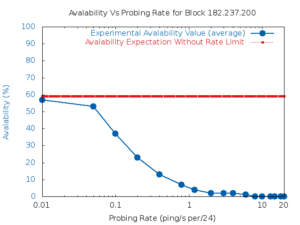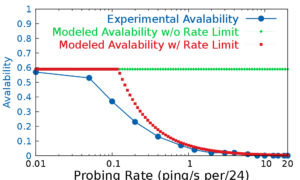We have published a new journal paper “Detecting IoT Devices in the Internet” in IEEE/ACM Transactions on Networking, available at https://www.isi.edu/~johnh/PAPERS/Guo20c.pdf

From the abstract of our journal paper:
Distributed Denial-of-Service (DDoS) attacks launched from compromised Internet-of-Things (IoT) devices have shown how vulnerable the Internet is to largescale DDoS attacks. To understand the risks of these attacks requires learning about these IoT devices: where are they? how many are there? how are they changing? This paper describes three new methods to find IoT devices on the Internet: server IP addresses in traffic, server names in DNS queries, and manufacturer information in TLS certificates. Our primary methods (IP addresses and DNS names) use knowledge of servers run by the manufacturers of these devices. Our third method uses TLS certificates obtained by active scanning. We have applied our algorithms to a number of observations. With our IP-based algorithm, we report detections from a university campus over 4 months and from traffic transiting an IXP over 10 days. We apply our DNS-based algorithm to traffic from 8 root DNS servers from 2013 to 2018 to study AS-level IoT deployment. We find substantial growth (about 3.5×) in AS penetration for 23 types of IoT devices and modest increase in device type density for ASes detected with these device types (at most 2 device types in 80% of these ASes in 2018). DNS also shows substantial growth in IoT deployment in residential households from 2013 to 2017. Our certificate-based algorithm finds 254k IP cameras and network video recorders from 199 countries around the world.
We make operational traffic we captured from 10 IoT devices we own public at https://ant.isi.edu/datasets/iot/. We also use operational traffic of 21 IoT devices shared by University of New South Wales at http://149.171.189.1/.
This journal paper is joint work of Hang Guo and John Heidemann from USC/ISI.






